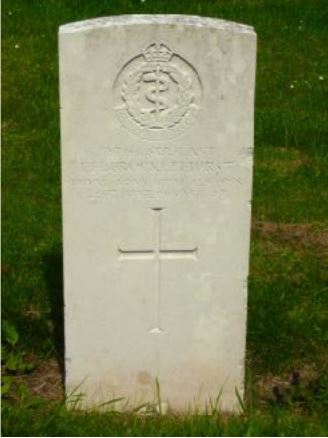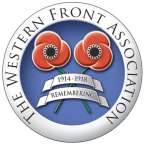1st London Sanitary Section, Royal Army Medical Corps

Although there are significant gaps in our knowledge of Frederic Brocklehurst’s military career, he appears to have been an educated man, who served for a large part of the war.
Frederic Heathcote Brocklehurst was born at Eton, near Slough, in the latter part of 1891. His parents were Frank Brocklehurst (1863-1921) and his wife Jesse (née Seymour). Jesse was born in 1867 but died just under the age of thirty in 1896. Frederic had two siblings, a sister, Jesse May (born 1892) and a brother, Frank Seymour, who was born in 1896 and died in the year following. It is possible that Jesse Brocklehurst died in childbirth. Frank and Jesse had married in 1899.
It has not proved possible to locate any of the surviving Brocklehurst’s in the 1901 Census. In that of 1911 Frank is living at 8 Ashcroft Road, Cirencester, as a widower employed as a foreman letter press printer. At this time Frederic (aged 19) was living at 23 Wellington Street, Slough, as a student, lodging with his maternal grandfather, John Brown Seymour.
Frederic is listed in the University of London Student Records 1836-1945 (published on the Ancestry website) as becoming a Private in the Royal Army Medical Corps (RAMC).
No Army Service or Pension records appear to have survived for Frederic. According to the CWGC Register he joined the RAMC and served with the 1st London Sanitary Section. We know from his Medal Index Card that he was originally assigned the number 497 and that he first went abroad, to the Western Front, on 29 May 1915. His low service number and relatively early date of his posting abroad are both indicators that he was an early volunteer for the Army and as such may have chosen to serve in the RAMC. We also know that he joined as a member of the Territorial Force (TF). According to Soldiers Died in the Great War, he enlisted at Chelsea. Possibly his university studies were connected with medicine but this is an area which would require specific enquiry to the University of London.
According to a posting on the Long, Long Trail website, the 1st London Sanitary Section was an experimental TF unit, formed in 1908 and based at the Duke of York’s Barrack in Chelsea. The RAMC Sanitary Sections (SS) first went abroad, to the various theatres of war, in early to mid-1915 and worked in conjunction with Field Ambulances. They did not come under direct Corps or Army control until March 1917. This was when all personnel serving in TF were allocated new six digit numbers and Frederic’s became 527461. SS units were small, usually around 25 men, commanded by a Lieutenant or Second Lieutenant, with two Serjeants, two Corporals and 20 or so Privates. It must be a reflection of Frederic’s capabilities that he saw promotion to Acting Serjeant. Each man in the unit had expertise in sanitary inspection, architecture, engineering and building.
This is almost as much as it has been possible to discover about Frederic. He died at Napsbury War Hospital, St Albans on 21 June 1918, age 27. How he came to be there and the reason for his admission are not known. Napsbury was originally built to house the mentally ill but was turned over to the treatment of wounded soldiers for the duration of the war. It was also known as the County of Middlesex War Hospital.
Acting Serjeant Frederic Heathcote Brocklehurst was buried in Cirencester (Chesterton) Cemetery on 25 June 1918, where a standard CWGC headstone now marks his grave. He is commemorated on Cirencester War Memorial and also on the memorial inside Bigham Hall Grammar School.
Researched by Graham Adams 22 April 2021
